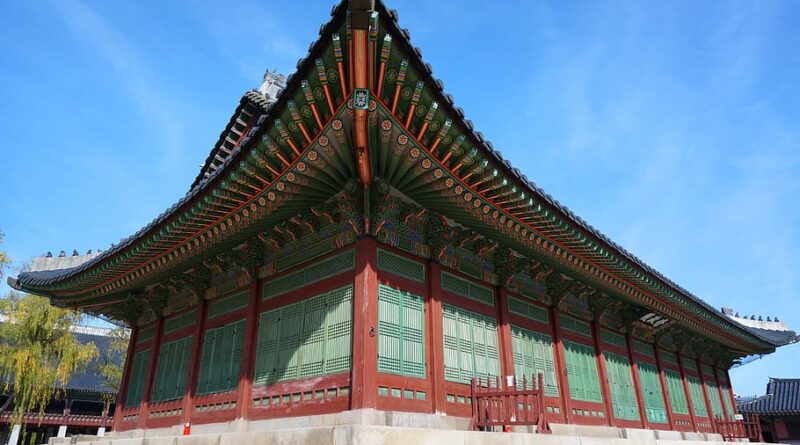Gyeongbokgung Palace, Seoul, South Korea
Unveiling the Majesty of Gyeongbokgung Palace: Seoul’s Timeless Gem
In the heart of Seoul, a city that seamlessly blends modernity with tradition, stands a magnificent testament to South Korea’s rich history and cultural heritage. Gyeongbokgung Palace, often referred to as the “Palace Greatly Blessed by Heaven,” is a majestic complex that transports visitors back in time to the days of ancient dynasties and royal courts. With its grand architecture, serene gardens, and historical significance, Gyeongbokgung Palace is not just a tourist attraction; it’s a living testament to South Korea’s enduring spirit. In this article, we embark on a journey to explore the grandeur and significance of Gyeongbokgung Palace, uncovering the stories and secrets that have shaped Seoul’s identity.
A Glimpse into Korea’s Royal Past
Gyeongbokgung Palace, located in the heart of Seoul, was built in 1395 during the Joseon Dynasty, one of Korea’s longest-ruling dynasties. The palace served as the main royal residence for numerous generations of Joseon monarchs and was an epicenter of political and cultural activity. With its expansive grounds, grand architecture, and meticulously designed layout, the palace complex reflected the Confucian principles that shaped Joseon society.
The palace complex covers over 40 acres and is surrounded by Mount Bugaksan and Mount Namsan, creating a natural backdrop that adds to its allure. It is a harmonious blend of traditional Korean architectural elements and natural beauty, a true masterpiece that captures the essence of the country’s history.
Architectural Splendor
The architecture of Gyeongbokgung Palace is a captivating fusion of intricate design and symbolic meaning. The palace’s main gate, Gwanghwamun, is a magnificent wooden structure that greets visitors with its towering presence. As you step through the gate, you are transported to a world of grand halls, pavilions, and courtyards that once hosted royal ceremonies, audiences, and daily life.
One of the most iconic structures within the palace is Geunjeongjeon, the main throne hall. This majestic hall was the site of important state affairs, coronation ceremonies, and royal receptions. Its elevated platform, ornate decorations, and meticulous attention to detail reflect the prestige and power of the Joseon monarchy.
Preserving Cultural Heritage
Gyeongbokgung Palace’s journey through history hasn’t been without challenges. The palace complex has undergone multiple restorations and renovations, with the most significant restoration taking place in the 19th century. Despite the challenges of war, foreign occupation, and the passage of time, South Korea’s commitment to preserving its cultural heritage has ensured that Gyeongbokgung Palace stands as a symbol of resilience and national pride.
The National Palace Museum of Korea, located within the palace complex, houses artifacts and treasures that provide insight into the lives of the royal family and the cultural significance of the palace. Visitors can explore historical documents, royal garments, ceremonial items, and more, immersing themselves in the rich tapestry of South Korea’s past.
Changing of the Guard Ceremony
For a truly immersive experience, witnessing the Changing of the Guard Ceremony at Gyeongbokgung Palace is a must. This traditional ceremony takes place in front of Gwanghwamun Gate and is a captivating display of martial arts, music, and historical reenactment. The ceremony provides a glimpse into the protocols and customs of the Joseon era, offering visitors a deeper appreciation for the palace’s role in shaping South Korea’s history.
Royal Gardens and Reflections
Beyond the grand halls and pavilions, Gyeongbokgung Palace boasts tranquil gardens that invite contemplation and serenity. Hyangwonjeong, a small pavilion on an island in a pond, reflects the idea of harmony between humanity and nature, a central theme in Confucian philosophy. The gardens are meticulously landscaped and offer a peaceful escape from the city’s bustling streets.
During the spring, cherry blossoms bloom throughout the palace grounds, creating a scene of breathtaking beauty that draws both locals and tourists. The delicate pink blossoms against the backdrop of historic architecture are a vivid representation of the harmony between the old and the new that defines Seoul.
Cultural Symbolism and National Pride
Gyeongbokgung Palace holds immense cultural and symbolic significance for South Korea. It represents a bridge between the country’s past and its present, serving as a reminder of the resilience of the Korean people and their dedication to preserving their heritage.
The palace complex stands as a cultural hub, hosting events, festivals, and performances that showcase traditional arts, crafts, and music. These activities not only celebrate Korea’s past but also breathe new life into its traditions, ensuring that they continue to flourish in the modern world.
Conclusion
Gyeongbokgung Palace stands as a testament to the enduring spirit of South Korea—a country that cherishes its history while embracing the opportunities of the present. As visitors explore the palace’s grand architecture, lush gardens, and rich history, they are reminded that every stone and structure carries a story of a bygone era. Gyeongbokgung Palace is a living canvas that paints the picture of a nation’s journey, a journey that continues to unfold with every step taken within its hallowed grounds.



